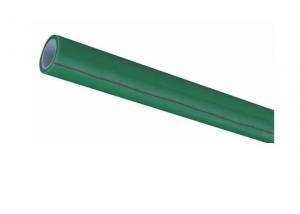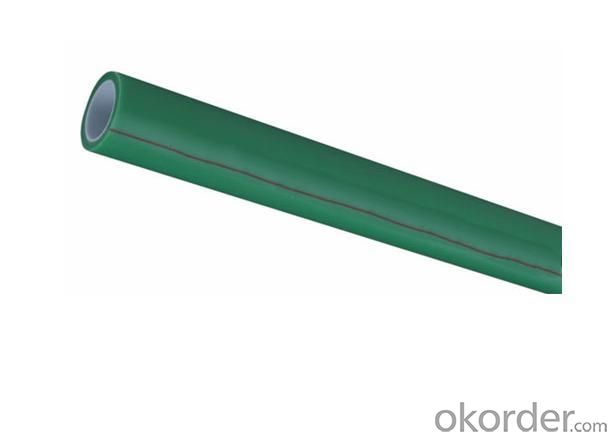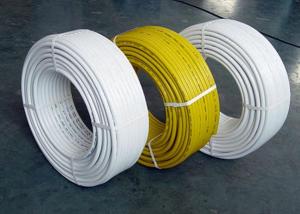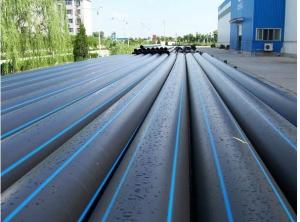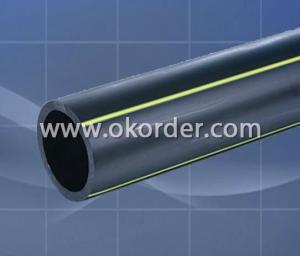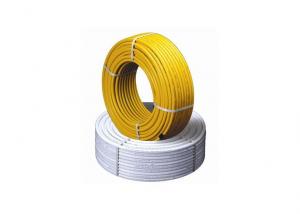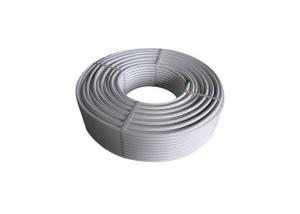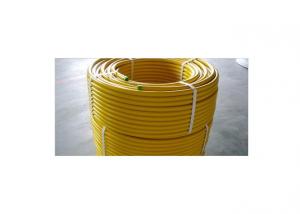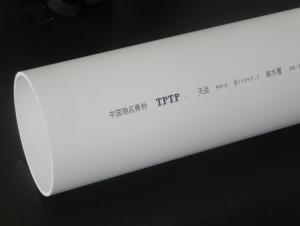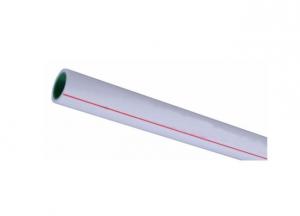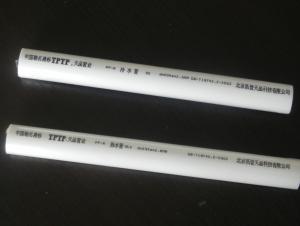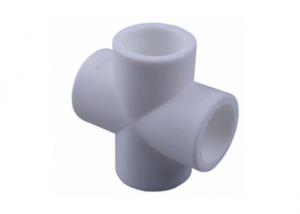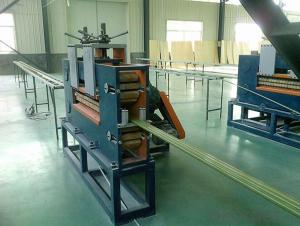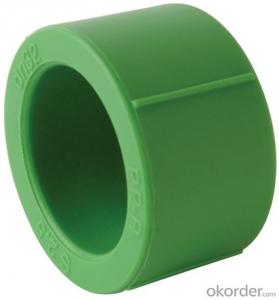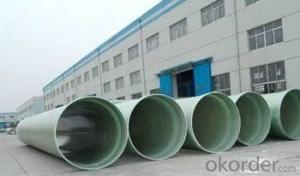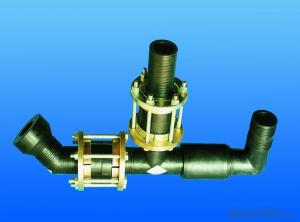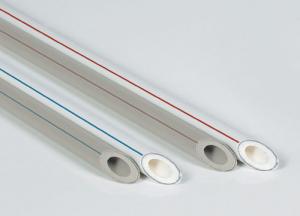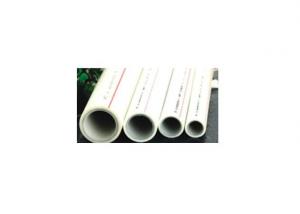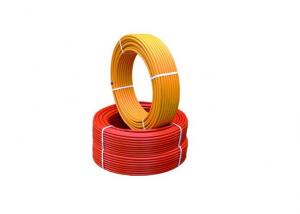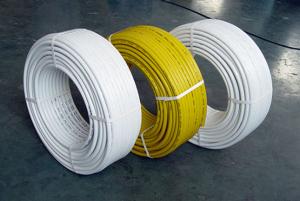Nanometer Antibacterial PP-R Composite Pipes
- Loading Port:
- China Main Port
- Payment Terms:
- TT or LC
- Min Order Qty:
- 1000 Meters m
- Supply Capability:
- 50000 Meters per Day m/month
OKorder Service Pledge
OKorder Financial Service
You Might Also Like
Nanometer Antibacterial PP-R pipe
Size: 20-75 mm
15 years produce experience
Certificate: CE; ISO9001
Features of Nanometer Antibacterial PP-R pipe:
Sizes: 20 to 75mm
Pressure: PN1.25Mpa; PN1.6Mpa; PN2.0Mpa; PN2.5Mpa
Colors: Light grey, white or other colors on request
Connection: Welding
Certification: CE, ISO9001
Advantages of Nanometer Antibacterial PP-R pipe:
High Temperature Resistance: the maximum sustained working temperature is up to 70 °C,the maximum transient temperature is up to 95°C
Heat Preservation: low thermal conductivity which is only 1/1500 of brass pipe. And 1/250 of steel pipe.
Non-toxic: no heavy metal additives, would not be covered with dirt or contaminated by bacterium.
Corrosion Resistant: resist chemical matters or electron chemical corrosion.
Lower Installation Costs: light weight and ease of installation can reduce installation costs by as much as 50%over metal piping system.
Higher Flow Capacity: smooth interior walls result in lower pressure loss and higher volume than metal pipes.
Long Life: more than 50 years under normal conditions
Recycled and Environment-friendly
- Q: Can composite pipes be used for chemical processing plants?
- Yes, composite pipes can be used for chemical processing plants. Composite pipes offer several advantages including resistance to corrosion, high strength-to-weight ratio, and excellent chemical resistance. They are commonly used in industries where chemical processing occurs due to their durability and ability to withstand harsh environments. Additionally, composite pipes can also be customized to meet specific requirements, making them a suitable choice for chemical processing plants.
- Q: How do composite pipes handle water hammer in firefighting systems?
- Composite pipes are specifically designed to handle water hammer in firefighting systems. These pipes are made of durable materials, such as fiberglass and resin, which have excellent resistance to pressure surges. The composite construction allows the pipes to absorb and dissipate the energy generated by water hammer, preventing any damage to the system. Additionally, composite pipes have a smooth inner surface, which reduces the turbulence caused by sudden changes in water flow, further minimizing the occurrence of water hammer.
- Q: What's the difference between a steel skeleton pipe and a steel mesh frame?
- Steel wire mesh composite pipe is a product of steel skeleton plastic composite pipe. After the development of technology, steel skeleton plastic composite pipe gradually withdraw from the market
- Q: Steel plastic composite pipe for temperature is how much?
- And supporting the use of plastic lined steel composite pipe for conveying fluid and corrosive gas, to replace the stainless steel pipe, rubber lining lining pipe, glass pipe and other precious metal pipe.
- Q: Can composite pipes be used for cooling towers?
- Yes, composite pipes can be used for cooling towers. Composite pipes are known for their excellent corrosion resistance, high strength, and lightweight properties, making them suitable for various industrial applications, including cooling tower systems. Additionally, composite pipes offer thermal insulation, which can enhance the efficiency of cooling processes in towers.
- Q: Are composite pipes suitable for use in refineries?
- Yes, composite pipes are suitable for use in refineries. Composite pipes offer numerous advantages such as lightweight, corrosion resistance, and high strength-to-weight ratio, making them ideal for transporting various fluids and chemicals in refinery operations. Additionally, their ability to withstand extreme temperatures, pressures, and corrosive environments makes them a reliable choice for the demanding conditions of refineries.
- Q: Can composite pipes be used for pneumatic tools?
- Yes, composite pipes can be used for pneumatic tools. Composite pipes, which are made from a combination of materials such as fiberglass and resin, offer excellent strength, corrosion resistance, and durability. These characteristics make them suitable for various applications, including pneumatic tools. Composite pipes can effectively handle the high-pressure air required by pneumatic tools while providing lightweight and flexible options for easy maneuverability.
- Q: Can steel wire frame polyethylene composite pipe work as fire hose?
- Can, plastic steel mesh skeleton plastic composite pipe for underground pipeline fire has been used in many engineering projects, steel wire reinforced composite pipe has the advantages of convenient installation, no corrosion, stable performance, excellent performance, construction speed has great advantages than traditional pipe, steel mesh skeleton composite pipe in the earthquake in Wenchuan is superior to the performance of its products to be fully affirmed. If there are more pipe problems, you can add.
- Q: What are the pipes made of steel wire mesh and plastic composite pipes?
- Because of the high strength steel wire reinforced body is coated in a continuous thermoplastic plastics, so the composite pipe steel pipe and a plastic pipe overcomes their shortcomings, and make the steel mesh skeleton PE composite pipe keeps the advantages of steel and plastic pipe.
- Q: Are composite pipes suitable for high-altitude installations?
- Yes, composite pipes are suitable for high-altitude installations. Composite pipes are lightweight, durable, and have excellent resistance to extreme temperatures and corrosion. These qualities make them ideal for withstanding the challenges of high-altitude environments, including changes in pressure, temperature, and weather conditions. Additionally, composite pipes are flexible, allowing for easier installation and maintenance in remote and difficult-to-reach areas at high altitudes.
1. Manufacturer Overview
| Location | Zhejiang, China |
| Year Established | 2004 |
| Annual Output Value | |
| Main Markets | North America South America Eastern Europe Southeast Asia Africa Oceania Mid East Eastern Asia Western Europe |
| Company Certifications | CE;ISO9001:2000 |
2. Manufacturer Certificates
| a) Certification Name | |
| Range | |
| Reference | |
| Validity Period |
3. Manufacturer Capability
| a) Trade Capacity | |
| Nearest Port | |
| Export Percentage | 31% - 40% |
| No.of Employees in Trade Department | |
| Language Spoken: | |
| b) Factory Information | |
| Factory Size: | 10,000-30,000 square meters |
| No. of Production Lines | 6 |
| Contract Manufacturing | OEM Service Offered Buyer Label Offered |
| Product Price Range | |
Send your message to us
Nanometer Antibacterial PP-R Composite Pipes
- Loading Port:
- China Main Port
- Payment Terms:
- TT or LC
- Min Order Qty:
- 1000 Meters m
- Supply Capability:
- 50000 Meters per Day m/month
OKorder Service Pledge
OKorder Financial Service
Similar products
Hot products
Hot Searches
Related keywords
